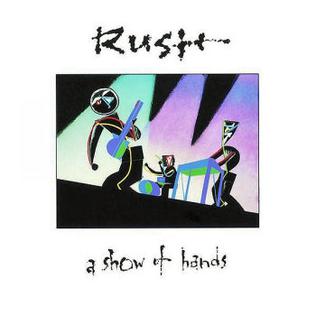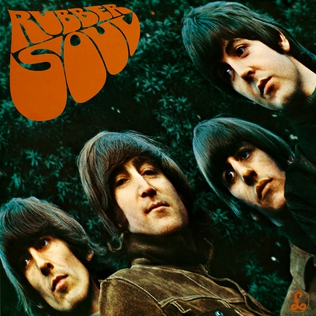Impactful Albums DAY 2
Canadian prog institution Rush are part of the triad of most highly exalted personal favorite rock acts (along with XTC and Red Hot Chili Peppers) that largely dominated my listening habits for the past thirty-five years. But, in tune with their reputation as an “acquired taste,” my fandom didn’t come instantly. Rather, it simmered slowly throughout the ’80s; finally coming to a frothy head in ’89 with A Show of Hands.
SET THE WHEELS IN MOTION
As I’ve said before, no one had a greater influence on my early music preferences than my older brother. Sure, we diverged somewhat when the stars of music video breached my consciousness c. ’82-’83, but our tastes still intersected more often than not.
His music was cool. He dabbled in quirky new wave stuff where melodicism balanced perceived weirdness (the Cars; Flock of Seagulls; the Fixx). Most importantly, he introduced me to some of the biggest prog/prog adjacent bands of the mid-late ’70s and early ’80s. Some of his favorites – Boston, ELO, Asia, ELP, and Yes – struck me pretty quickly. Rush, however, required more time to sink-in. I guess that Geddy Lee’s signature whale-pitch and Neil Peart’s contemplative, erudite lyrics combined with the group’s elaborate, sophisticated song structures were just too far ahead of me at the time. And the ’80s were supposed to be their most commercially accessible period (ha!).
ALL THIS COOL MACHINERY PLAYING MODERN MUSIC
Anyway, Rush records started filtering into the house in the early ’80s after my brother bought his Akai stereo* system. I think he started with the Permanent Waves or Moving Pictures and then steadily worked his way backward through their catalog until he’d caught up.
Late Saturday nights, he caught glimpses of the famed power-trio on The Beat. Hosted for our local PBS affiliate by DJ “Doc” Doug Podell and simulcast over WLLZ 98.7 FM (“Detroit’s Wheels”), the rock-focused music video show unfortunetely aired later than my “official” bedtime for most of the ’80s. But I found ways to partake of all the heavy rock awesomeness. I fit in strategic bathroom visits here and last-minute cups of water there. Maybe I accidentally forgot to pick-up a stray Ewok from the living room earlier that night… Either way, I distinctly remember wondering why the cheery kid was riding a nuclear missile in Rush’s “Distant Early Warning” clip. Yeah, I was getting curious, but I still didn’t fully understand the appeal yet.
* The coolest thing I’d ever seen up to that point, btw.
IF YOU PICK UP THE BEAT
But then Les brought home the VHS and cd editions of A SHOW OF HANDS. After a month or so of repeat viewings, Rush just…clicked! Like my brother, I couldn’t get enough. It’s impossible to say how many times we watched the video together. It’s just amazing that it didn’t fall apart.
By this time, I was singing along and vocalizing to Lee’s and Alex Lifeson’s dizzyingly diverse arsenal of bass/guitar licks. The true sign I’d been hooked, however, came when I started half-assed tracking Peart’s painstakingly arranged drum parts. My list of drum heroes would fill two pages, double-sided, but, seriously… From that point forward, he was the one; my personal messiah of all things percussion. What a scene it must have been – the sight and sound of drum-nerd brothers lap-tapping in tandem to the condensed Rush catalog. It’s almost as sweet as it is dorky (…almost). But that’s us (shrug).
IF YOU CHOOSE NOT TO DECIDE YOU STILL HAVE MADE A SOUND CHOICE
A Show of Hands was the third of four live Rush albums to follow a cycle of four consecutive studio efforts and officially mark the end of a distinct phase of their career; the second to be issued with a companion video. Interestingly, like their previous tandem live release – Exit…Stage Left – each version of A Show of Hands serves a different purpose. Where the LP pieces together highlights from the previous two tours to (mostly) present an overview of the band’s output during that specific period, the video documents a specific date from their ’87-’88 Hold Your Fire tour and (mostly) captures the excitement of an actual Rush concert performance.
Now, one might think that continuity of experience between the distinct editions of A Show of Hands would be middling, but I don’t find that to be the case. The track listings are comparable enough. Further, the songs featured on both editions are virtually identical. Most importantly, the uniformly warm, dynamic, and tonally rich sound mixes arguably present “definitive” recordings of all Rush compositions presented. So the band overdubbed their parts to correct imperfections in the original recordings. Who cares. So what if the video omitted “Subdivisions,” “Time Stand Still,” “Mystic Rhthyms,” and “Distant Early Warning” and the record dropped “YYZ,””The Spirit of Radio,” “Tom Sawyer,” and the grand medley “2112 Overture”/”The Temples of Syrinx”/”La VIlla Strangiato”/”In the Mood.” It is kind of odd that the record dropped “Prime Mover” given how the lyric provided the album title, but I’m quibbling. In the end, the collective songs have rarely sounded better.
CLOSER TO THE HEART
I’ve taken a lot of ribbing for being a Rush fan over the years – particularly from females and “serious” music snobs. Whatever. Rush made my world bigger. If Asia, Yes’ 90125, Emerson, Lake, & Powell, and Star Wars (props to John Williams) were my initial pathways to appreciating complex forms, A Show of Hands blew out the conduit. Thanks to Dirk, Lerxst, and Pratt (AKA Geddy, Alex, and “Professor” Peart), I can listen to classical, jazz, and other challenging forms, separate the parts, and follow what’s going on despite my lack of formal music theory training. Pretty cool.
Even now, eight years after their last tour and three years after dread cancer claimed Neil Peart, Rush still inspires me. With their wise words and music, they taught me to think and listen intentionally. Their success reminded me that, although nothing’s guaranteed, good things can come to those who work hard, keep perspective, and never give up on living their passions. Life is a marathon. Roll the bones. Peart’s playing was a prime mover behind the decision to finally buy my own drum kit (I’m just forcing-in the Rush puns, aren’t I). Just over two years ago, I started this blog to develop my writing and prompt creation of new art. Maybe I’ll never be more than a blunt instrument, but that’s not the point. Win or lose, whatever the obstacles, regardless of pace, it’s important to keep learning and growing. Keep piling on those little victories. Anything can happen.

